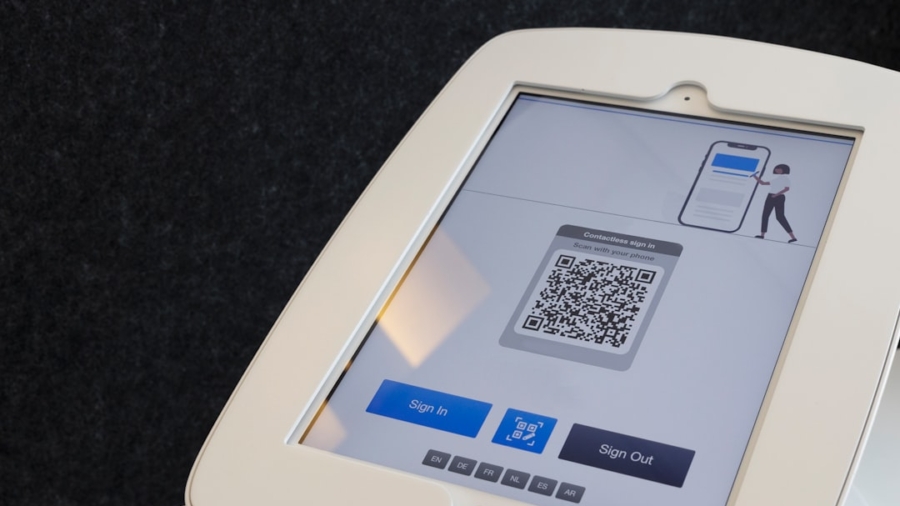In recent years, the financial sector has witnessed a significant transformation driven by technological advancements, with biometric authentication emerging as a pivotal element in this evolution. The increasing prevalence of cyber threats and identity theft has compelled financial institutions to seek more secure methods of verifying user identities. Traditional authentication methods, such as passwords and PINs, have proven inadequate in the face of sophisticated hacking techniques.
As a result, banks and financial service providers are increasingly adopting biometric solutions, which leverage unique physical characteristics—such as fingerprints, facial recognition, and iris scans—to authenticate users. This shift not only enhances security but also aligns with the growing consumer demand for seamless and efficient banking experiences. The adoption of biometric authentication in finance is not merely a trend; it represents a fundamental change in how institutions approach security.
According to a report by MarketsandMarkets, the global biometric authentication market is projected to grow from $3.8 billion in 2020 to $9.6 billion by 2025, reflecting a compound annual growth rate (CAGR) of 20.4%. This surge is driven by the increasing need for secure transactions and the proliferation of mobile banking applications that require robust identity verification methods. Financial institutions are now investing heavily in biometric technologies to not only protect their assets but also to build trust with their customers, who are increasingly aware of the risks associated with digital banking.
Key Takeaways
- Biometric authentication is on the rise in finance, with many institutions adopting it for enhanced security.
- Advantages of biometric authentication in finance include increased security, convenience, and reduced fraud.
- Challenges and risks of implementing biometric authentication in finance include potential data breaches and privacy concerns.
- The future of biometric authentication in finance includes innovations such as voice recognition and behavioral biometrics.
- Biometric authentication enhances the customer experience in financial services by providing a seamless and secure way to access accounts.
The Advantages of Biometric Authentication in the Financial Industry
One of the most compelling advantages of biometric authentication is its ability to provide a higher level of security compared to traditional methods. Biometric traits are inherently unique to each individual, making it exceedingly difficult for unauthorized users to replicate or steal them. For instance, fingerprint recognition systems analyze the unique patterns of ridges and valleys on an individual’s fingertip, while facial recognition technology uses algorithms to map facial features.
This uniqueness significantly reduces the risk of fraud and identity theft, which are rampant in the financial sector. A study by Javelin Strategy & Research found that in 2020 alone, identity fraud resulted in losses exceeding $56 billion in the United States, underscoring the urgent need for more secure authentication methods. In addition to enhanced security, biometric authentication offers convenience and efficiency for both consumers and financial institutions.
Users no longer need to remember complex passwords or carry multiple identification cards; instead, they can access their accounts with a simple fingerprint scan or facial recognition. This streamlined process not only improves user experience but also reduces the likelihood of account lockouts due to forgotten passwords. Furthermore, biometric systems can be integrated into mobile banking applications, allowing users to authenticate transactions quickly and securely from their smartphones.
This convenience is particularly appealing in an era where consumers expect instant access to their financial information and services.
The Challenges and Risks of Implementing Biometric Authentication in Finance

Despite its numerous advantages, the implementation of biometric authentication in finance is not without challenges and risks. One significant concern is the potential for data breaches that could compromise sensitive biometric information. Unlike passwords that can be changed if stolen, biometric data is permanent and cannot be altered.
If a hacker gains access to a database containing biometric information, the consequences can be dire. For example, in 2015, the U.S. Office of Personnel Management suffered a massive data breach that exposed the fingerprints of over 5 million federal employees.
Such incidents raise critical questions about how financial institutions can safeguard biometric data against unauthorized access. Another challenge lies in the technology’s reliability and accuracy. While biometric systems have advanced significantly, they are not infallible.
Factors such as lighting conditions, physical changes (like aging or injury), and environmental conditions can affect the performance of biometric recognition systems. For instance, facial recognition technology may struggle to accurately identify individuals wearing masks or sunglasses, which became particularly relevant during the COVID-19 pandemic. Additionally, false positives or negatives can lead to frustrating user experiences or security vulnerabilities.
Financial institutions must invest in high-quality biometric systems and continuously update their technology to mitigate these risks effectively.
The Future of Biometric Authentication: Innovations and Trends
The future of biometric authentication in finance is poised for exciting innovations and trends that will further enhance security and user experience. One notable trend is the integration of multi-modal biometric systems that combine various authentication methods to create a more robust security framework. For example, a system might use both fingerprint scanning and facial recognition to verify a user’s identity, significantly reducing the likelihood of unauthorized access.
This multi-layered approach not only enhances security but also provides flexibility for users who may prefer one method over another. Another promising innovation is the use of behavioral biometrics, which analyzes patterns in user behavior rather than relying solely on physical traits. This technology monitors factors such as typing speed, mouse movements, and even how a user holds their device to create a unique behavioral profile.
By continuously assessing these patterns during transactions, financial institutions can detect anomalies that may indicate fraudulent activity. Behavioral biometrics adds an additional layer of security that complements traditional biometric methods, making it increasingly difficult for fraudsters to bypass authentication measures.
Biometric Authentication and the Customer Experience in Financial Services
The implementation of biometric authentication has profound implications for customer experience within financial services. As consumers become more accustomed to seamless digital interactions across various industries, they expect similar experiences from their banks and financial institutions. Biometric authentication meets this demand by providing quick and efficient access to accounts without the friction often associated with traditional authentication methods.
For instance, customers can complete transactions or access sensitive information with just a touch or glance, significantly reducing wait times and enhancing overall satisfaction.
As customers become increasingly aware of cybersecurity threats, they seek assurance that their personal information is protected.
By adopting advanced biometric solutions, banks can demonstrate their commitment to safeguarding customer data and enhancing security measures. This proactive approach not only builds customer loyalty but also positions financial institutions as leaders in innovation within an increasingly competitive landscape.
Regulatory and Privacy Considerations for Biometric Authentication in Finance

As biometric authentication becomes more prevalent in finance, regulatory and privacy considerations are paramount. Governments and regulatory bodies are grappling with how to establish guidelines that protect consumers while fostering innovation in this space. One significant concern is the collection and storage of biometric data, which raises questions about consent and data ownership.
Financial institutions must ensure that they obtain explicit consent from users before collecting their biometric information and provide clear explanations regarding how this data will be used and stored. Additionally, compliance with existing data protection regulations is crucial for financial institutions implementing biometric authentication. In Europe, for instance, the General Data Protection Regulation (GDPR) imposes strict requirements on how organizations handle personal data, including biometric information classified as sensitive data.
Financial institutions must implement robust data protection measures to comply with these regulations while also addressing consumer concerns about privacy and data security. Failure to adhere to these regulations can result in significant fines and damage to an institution’s reputation.
Case Studies: Successful Implementations of Biometric Authentication in Finance
Several financial institutions have successfully implemented biometric authentication solutions, showcasing its effectiveness in enhancing security and improving customer experience. One notable example is HSBC’s use of fingerprint recognition technology within its mobile banking app. By allowing customers to log in using their fingerprints instead of traditional passwords, HSBC has streamlined the authentication process while significantly reducing instances of fraud related to stolen credentials.
This implementation has not only improved user satisfaction but has also positioned HSBC as a forward-thinking institution committed to leveraging technology for enhanced security. Another compelling case study is that of Bank of America, which has integrated facial recognition technology into its mobile banking platform. Customers can use facial recognition to access their accounts quickly and securely from their smartphones.
This innovation aligns with consumer expectations for convenience while addressing security concerns associated with password-based logins. Bank of America’s successful implementation demonstrates how biometric authentication can enhance both security measures and customer engagement.
The Role of Biometric Authentication in Securing the Future of Financial Transactions
As financial transactions continue to evolve in an increasingly digital landscape, biometric authentication will play a crucial role in securing these interactions. The rise of digital wallets and contactless payment systems necessitates robust security measures that can keep pace with rapidly changing technologies. Biometric solutions offer a promising avenue for ensuring secure transactions while providing users with a seamless experience.
Moreover, as cyber threats become more sophisticated, financial institutions must adopt proactive measures to protect their assets and customer information. Biometric authentication serves as a formidable barrier against unauthorized access and fraud, enabling banks to safeguard sensitive data effectively. As technology continues to advance, we can expect further innovations in biometric solutions that will enhance security protocols while maintaining user convenience.
In conclusion, the rise of biometric authentication in finance represents a significant shift towards more secure and efficient methods of identity verification. While challenges remain regarding data privacy and technology reliability, the advantages offered by biometrics—such as enhanced security and improved customer experience—are driving its adoption across the industry. As financial institutions navigate this evolving landscape, they must remain vigilant about regulatory considerations while embracing innovations that will shape the future of secure financial transactions.
In the rapidly evolving landscape of financial technology, biometric authentication is emerging as a pivotal innovation, promising enhanced security and streamlined user experiences. As we delve into the future of biometric authentication in finance, it’s essential to consider the broader technological ecosystem that supports such advancements. An interesting related read is an article on Enicomp’s blog, which explores various technological trends and innovations. This article provides valuable insights into how different sectors are integrating cutting-edge technologies to improve service delivery and security, offering a comprehensive backdrop to the discussion on biometrics in finance.
FAQs
What is biometric authentication?
Biometric authentication is a security process that uses unique biological characteristics, such as fingerprints, facial recognition, or iris scans, to verify a person’s identity.
How is biometric authentication used in finance?
Biometric authentication is used in finance to provide secure access to accounts, authorize transactions, and prevent fraud. It offers a more secure and convenient alternative to traditional methods such as passwords and PINs.
What are the benefits of biometric authentication in finance?
The benefits of biometric authentication in finance include increased security, reduced fraud, improved customer experience, and streamlined authentication processes. It also eliminates the need for users to remember and manage multiple passwords.
What are the potential risks of biometric authentication in finance?
Potential risks of biometric authentication in finance include privacy concerns, data breaches, and the possibility of biometric data being stolen or replicated. There is also the risk of false positives or false negatives in biometric recognition.
What are the future trends in biometric authentication for finance?
Future trends in biometric authentication for finance include the integration of multiple biometric modalities for stronger security, the use of behavioral biometrics for continuous authentication, and the adoption of biometric authentication in a wider range of financial services and applications.

